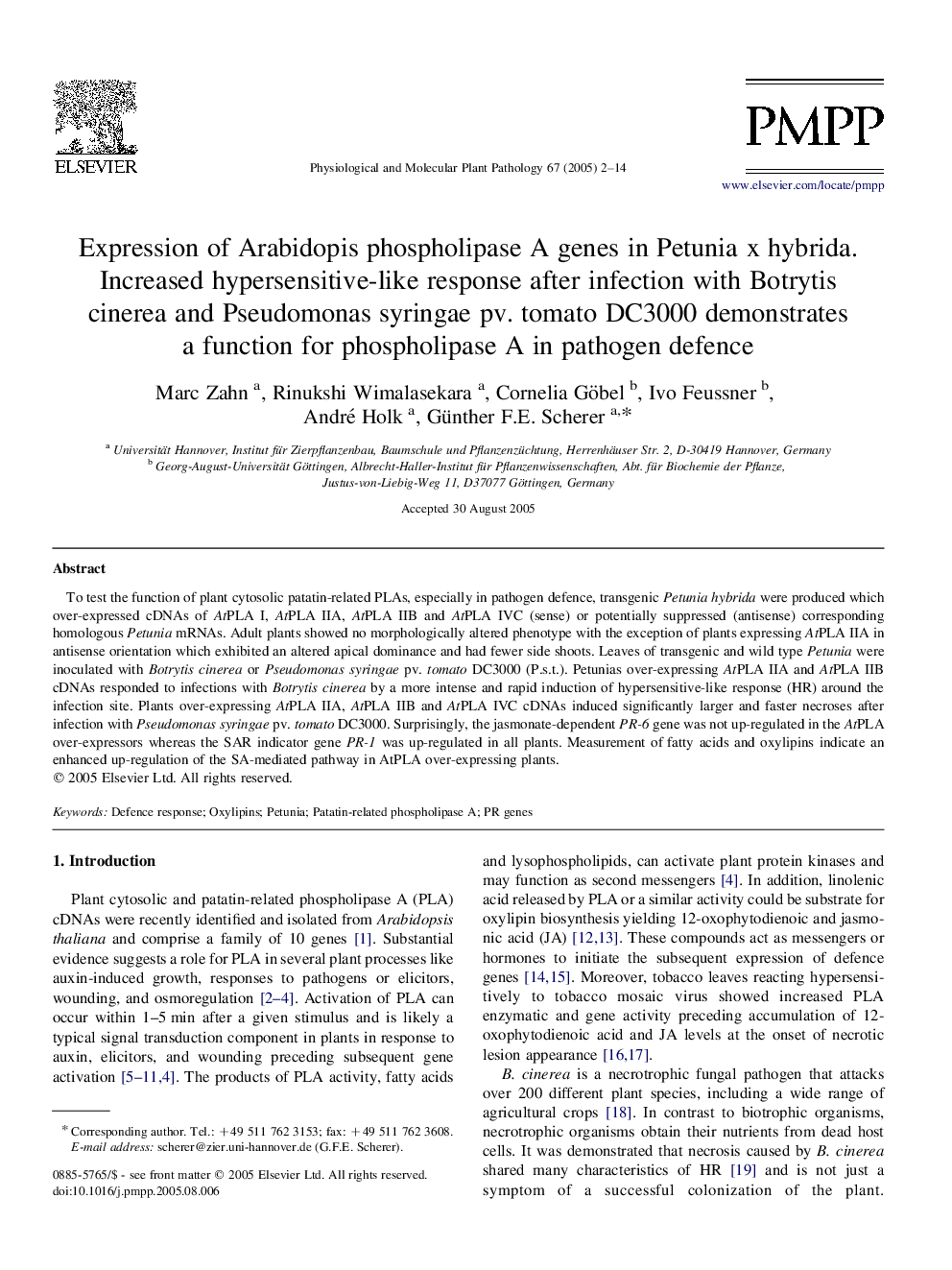| Article ID | Journal | Published Year | Pages | File Type |
|---|---|---|---|---|
| 9144611 | Physiological and Molecular Plant Pathology | 2005 | 13 Pages |
Abstract
To test the function of plant cytosolic patatin-related PLAs, especially in pathogen defence, transgenic Petunia hybrida were produced which over-expressed cDNAs of AtPLA I, AtPLA IIA, AtPLA IIB and AtPLA IVC (sense) or potentially suppressed (antisense) corresponding homologous Petunia mRNAs. Adult plants showed no morphologically altered phenotype with the exception of plants expressing AtPLA IIA in antisense orientation which exhibited an altered apical dominance and had fewer side shoots. Leaves of transgenic and wild type Petunia were inoculated with Botrytis cinerea or Pseudomonas syringae pv. tomato DC3000 (P.s.t.). Petunias over-expressing AtPLA IIA and AtPLA IIB cDNAs responded to infections with Botrytis cinerea by a more intense and rapid induction of hypersensitive-like response (HR) around the infection site. Plants over-expressing AtPLA IIA, AtPLA IIB and AtPLA IVC cDNAs induced significantly larger and faster necroses after infection with Pseudomonas syringae pv. tomato DC3000. Surprisingly, the jasmonate-dependent PR-6 gene was not up-regulated in the AtPLA over-expressors whereas the SAR indicator gene PR-1 was up-regulated in all plants. Measurement of fatty acids and oxylipins indicate an enhanced up-regulation of the SA-mediated pathway in AtPLA over-expressing plants.
Related Topics
Life Sciences
Agricultural and Biological Sciences
Plant Science
Authors
Marc Zahn, Rinukshi Wimalasekara, Cornelia Göbel, Ivo Feussner, André Holk, Günther F.E. Scherer,
